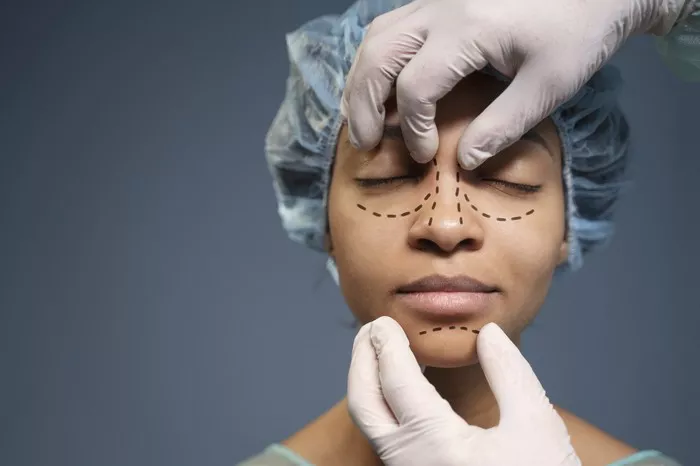Rhinoplasty, commonly known as a nose job, is a surgical procedure performed to reshape or reconstruct the nose. It is a popular cosmetic procedure that can enhance facial harmony and improve self-confidence. However, like any surgical procedure, there are potential risks and complications associated with rhinoplasty. It is important to be aware of these risks and have a comprehensive understanding of the procedure before making a decision. In this article, we will explore the potential risks and complications of a nose job.
1. General Surgical Risks
Rhinoplasty, like any surgical procedure, carries inherent risks associated with anesthesia and the surgical process itself. These general surgical risks include:
- Adverse Reaction to Anesthesia: Some individuals may have adverse reactions to anesthesia, such as respiratory problems, allergic reactions, or medication interactions. It is crucial to discuss your medical history and any concerns with your surgeon and anesthesiologist before the procedure.
- Infection: While rare, there is a risk of infection following rhinoplasty. Surgeons take precautions to minimize the risk of infection by following strict sterile techniques and prescribing antibiotics when necessary.
- Bleeding: Some degree of bleeding is expected during and after the surgery. However, excessive bleeding can occur, leading to complications. Surgeons may use techniques to minimize bleeding during the procedure and provide instructions to control bleeding postoperatively.
2. Swelling and Bruising
Swelling and bruising are common after rhinoplasty and are a natural part of the healing process. While they are generally temporary, there are a few factors that can impact the severity and duration of swelling and bruising:
- Individual Healing Response: Each person’s healing process is unique, and some individuals may experience more swelling and bruising than others.
- Surgical Technique: The specific surgical technique used can affect the degree of swelling and bruising. Open rhinoplasty, which involves an incision on the columella (the strip of tissue between the nostrils), may result in more swelling and bruising compared to closed rhinoplasty.
- Postoperative Care: Following postoperative care instructions, such as elevating the head, applying cold compresses, and avoiding certain activities, can help minimize swelling and bruising.
- While swelling and bruising are expected after a nose job, it is essential to monitor them closely and inform your surgeon if you notice excessive or prolonged swelling or severe bruising.
3. Poor Aesthetic Outcome
Rhinoplasty is a complex procedure that requires a skilled and experienced surgeon. Despite the surgeon’s best efforts, there is a risk of achieving a result that does not meet your expectations or desired aesthetic outcome. Factors that can contribute to a poor aesthetic outcome include:
- Surgeon’s Skill and Experience: Choosing a qualified and experienced surgeon who specializes in rhinoplasty can significantly reduce the risk of unsatisfactory results.
- Communication and Expectations: Clear communication between you and your surgeon is essential to ensure that your expectations are understood and realistic. It is crucial to have a thorough discussion about the potential outcomes and limitations of the procedure.
- Healing Process: The healing process plays a significant role in the final outcome of a nose job. Swelling and tissue changes can impact the appearance of the nose during the recovery period. It may take several months for the final results to become fully apparent.
In some cases, a revision rhinoplasty may be necessary to achieve the desired aesthetic outcome. It is important to discuss the possibility of revision surgery with your surgeon before the initial procedure.
4. Breathing Difficulties
Rhinoplasty can sometimes affect the functionality of the nose, leading to breathing difficulties. This can occur if there are changes to the nasal structure or if the nasal passages become obstructed. Potential causes of breathing difficulties after a nose job include:
- Nasal Valve Collapse: Altering the shape or structure of the nose can sometimes weaken the nasal valves, leading to collapse and breathing issues. This can be addressed with revision surgery if necessary.
- Internal Scarring: Scar tissue formation inside the nose can cause narrowing of the nasal passages, making it harder to breathe. Nasal saline irrigation and other non-surgical interventions may help alleviate this issue.
It is crucial to discuss any concerns about potential breathing difficulties with your surgeon prior to the procedure. A skilled surgeon will take measures to preserve or improve the nasal function while addressing aesthetic concerns.
5. Numbness and Sensation Changes
Temporary numbness and sensation changes in the nose and surrounding areas are common after rhinoplasty. This is typically due to nerve manipulation during the surgery. Most individuals regain normal sensation gradually as the healing process progresses. However, in rare cases, some individuals may experience long-term or permanent changes in sensation.
Although rare, skin irregularities and scarring can occur after a nose job. These complications can manifest as lumps, bumps, or uneven texture on the skin’s surface. In some cases, these issues can be addressed through non-surgical treatments or revision surgery.
Conclusion
Rhinoplasty can be a transformative procedure, enhancing both aesthetics and self-confidence. However, it is important to understand the potential risks and complications associated with the surgery. By choosing a skilled and experienced surgeon, communicating clearly, and following postoperative instructions, you can minimize the risks and increase the chances of achieving a successful outcome. Consult with a qualified plastic surgeon to discuss your concerns, expectations, and any potential risks specific to your individual case.


